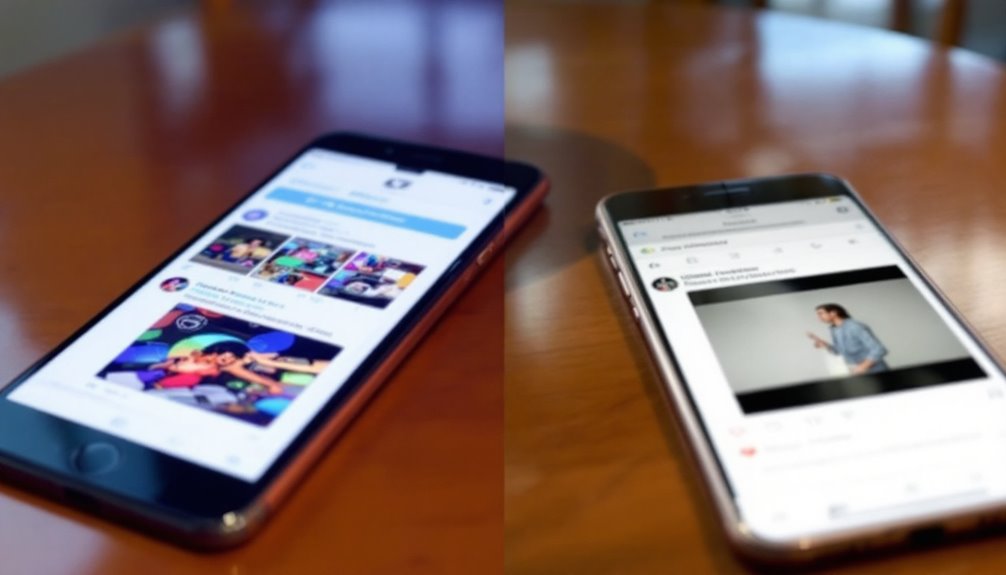
How many retweets does the average tweet get?
You’ve probably wondered how many retweets an average tweet really gets, especially given Twitter’s vast user base. While the number 1,690 might catch your attention, it’s crucial to remember this is an average skewed by a few viral tweets. Most tweets actually struggle to gain any traction. So, what makes one tweet soar while another sits unnoticed? Understanding engagement metrics and the factors that influence retweets can shine a light on this mystery. Are you curious to discover what sets apart an expert’s tweet from a random user’s? Let’s explore the dynamics that drive Twitter’s engagement.
Key Takeaways
- The average tweet receives 1690.46 retweets, indicating potential for significant engagement.
- Median retweets per tweet is 0, showing most tweets lack interaction.
- Few tweets gain viral status while the majority remain unnoticed.
- A power-law distribution means few tweets receive most retweets.
- Retweets can extend a tweet’s reach to approximately 1,000 users.
Average Retweets Overview

Examining the average retweets per tweet reveals captivating insights into Twitter’s engagement dynamics. On average, a tweet garners 1690.46 retweets, highlighting significant retweet trends that impact overall engagement patterns. Notably, while this average might suggest widespread interaction, the median number of retweets is 0, indicating that most tweets go unnoticed. This stark contrast underscores a fascinating dynamic: while a few tweets achieve viral status, the vast majority struggle for visibility.
In understanding these retweet trends, it’s essential to recognize factors influencing such discrepancies. The number of followers and followees plays a vital role; users with larger networks tend to experience more retweets. Additionally, tweets containing URLs and short hashtags are more likely to be shared, demonstrating how content formatting can shape engagement patterns. Quoted tweets and the age of the account also subtly influence retweetability, albeit to a lesser degree. Retweets are instrumental in extending a tweet’s reach, with the average retweet rate being 1690.46, which emphasizes the potential for vast audience exposure.
Retweets serve as a powerful tool for amplifying a tweet’s reach, often extending engagement beyond the originator’s immediate audience. This mechanism facilitates rapid information diffusion, creating a ripple effect throughout the Twitterverse.
Understanding Engagement Metrics
To truly understand engagement metrics, you must analyze retweet distribution patterns and compare them against established engagement rate benchmarks. This analysis helps identify which tweets resonate most with your audience and uncover trends in user interactions. Regularly monitoring engagement metrics allows for timely adjustments to content strategies, ensuring that your tweets achieve the desired level of audience engagement and visibility.
Retweet Distribution Analysis
In analyzing retweet distribution, you’ll find that the data reveals a highly skewed pattern, where most tweets receive no retweets, while a small fraction capture the majority. This indicates a power-law distribution in retweet behavior. Retweet trends show that content with high engagement often reaches a broader audience rapidly, suggesting that certain tweets resonate more deeply with user demographics. Even with a large follower count, a tweet’s reach doesn’t solely depend on the original audience; retweeted content can extend to around 1,000 users regardless of initial exposure. Understanding these dynamics is vital for anyone looking to innovate in the digital space. Retweets serve as a key metric for virality, offering insight into what makes content impactful. It’s not just about follower numbers; the quality and relevance of the content play significant roles. Despite common assumptions, simplicity can sometimes drive higher engagement, as tweets without hashtags, emojis, or handles often perform better regarding retweets. A higher engagement rate is crucial as it goes beyond follower count to assess true interaction, affecting visibility and success on Twitter.
Engagement Rate Benchmarks
Understanding engagement rate benchmarks is essential for evaluating your social media strategy‘s effectiveness. It enables you to fine-tune engagement strategies and optimize audience targeting.
The engagement rate, calculated by dividing total engagements by total impressions, provides insight into content performance. General benchmarks indicate that a rate below 0.5% is poor, between 0.5-1% is average, and above 1% is excellent. These benchmarks help you gauge where your engagement stands compared to industry standards. In marketing, an increase in overall engagement metrics is a key indicator of success, as it highlights the effectiveness of your campaign.
Consider these engagement rate insights:
- Government sector: Has an average engagement rate of 2.4%, highlighting the importance of targeted communication.
- Consumer Goods & Retail: Leads with a 3.8% engagement rate, emphasizing the value of connecting with consumers.
- Overall average: Across industries, Twitter engagement rates hover around 2.3%.
- Competitor analysis: Setting benchmarks based on industry competition can refine your strategies.
Benchmarking Tweet Engagement

Although social media dynamics can be complex, benchmarking tweet engagement provides a clear framework for evaluating performance. You can harness engagement strategies to drive innovation by understanding key metrics.
For instance, calculating Public Engagement Rate, Impressions-Based Rate, and Profile Engagement Rate helps you gauge your content’s impact. The Median Engagement Rate of 0.029% suggests that, on average, a small fraction of your followers interacts with your tweets. However, top-performing brands achieve a 0.08% engagement rate by effectively targeting their audience.
By examining these rates, you can refine your audience targeting and optimize content strategies. The data indicates a good engagement range from 0.02% to 0.09%, whereas high engagement levels range from 0.09% to 0.33%.
To reach such levels, consider how your posting frequency might influence engagement. Top brands post about 4.2 times weekly, and consistency in posting correlates with improved engagement.
Since historical data on engagement spans the past year, comparing your performance against these trends can provide valuable insights into your growth. Industry variance and contextual engagement highlight the importance of tailoring strategies to your specific niche. Regular benchmarking against industry standards and competitors guarantees you remain agile.
Embrace these insights to innovate and enhance your tweet engagement effectively.
Retweet Influencing Factors
You can’t overlook the significant impact of follower count on retweetability, as more followers increase a tweet’s visibility and potential for engagement. Data shows that the length of hashtags matters too, with shorter ones proving more effective in boosting retweet rates. Findings from a study suggest that user interest in the tweet topic can significantly predict retweeting behavior.
Impact of Follower Count
The impact of follower count on retweet potential is often misunderstood. While you might assume a direct correlation between follower count and retweets, the reality is more nuanced. Twitter’s algorithm prioritizes follower engagement and content relevance over sheer numbers. This means that even if an account doesn’t boast a million followers, it can still achieve high retweet numbers by crafting engaging and relevant content.
Consider these insights:
- A tweet’s reach can average 1,000 users, regardless of the original account’s follower count.
- Tweets from accounts with fewer followers sometimes outperform those with more, with regard to retweets.
- The median engagement rate is 0.029%, highlighting the importance of engagement over follower numbers.
- High-quality content drives engagement, which is critical for visibility. Understanding the Twitter algorithm, which favors engaging content, is essential for boosting engagement and achieving higher retweet numbers.
The algorithm favors content that generates interaction, so focusing on engagement is key. When you post consistently relevant content, you’re more likely to see increased interaction and visibility. This strategy can outperform relying solely on a large follower base.
Influence of Hashtag Length
In examining the influence of hashtag length on retweets, it’s evident that longer hashtags are less effective in driving a tweet’s virality. Data suggests a notable negative relationship between hashtag length and tweet engagement, with a β coefficient of -0.004 indicating decreased favorites. Generally, users avoid retweeting posts burdened with lengthy hashtags, as they don’t resonate well with broad audiences. Instead, these hashtags may target a niche audience, but this doesn’t translate to a higher retweet count. With the median engagement rate across industries being 0.029%, brands must focus on concise and engaging content to stand out. Interestingly, while the average tweet garners 1690.46 retweets, this number doesn’t reflect the reality for most tweets, which often go unnoticed. The median hashtag length is zero, highlighting a trend where many tweets don’t even bother using hashtags. Those that do, tend to go overboard with multiple or elongated hashtags, which dilutes hashtag effectiveness.
For ideal audience targeting, concise hashtags are key, allowing better engagement without overwhelming your message. If you’re aiming for more retweets, shift focus to elements like media inclusion and concise content. Verified users and media-rich tweets are far more effective in enhancing retweet counts than lengthy hashtags.
Expert vs. Random User Tweets

Analyzing tweets from experts versus random users reveals notable differences in retweet dynamics. Experts wield a powerful influence, driving user engagement to new heights. Their tweets boast 6.6 times more retweets than those from random users. This disparity stems from expert influence, as experts often deliver the earliest, most relevant tweets about events, capturing immediate attention. Their popularity fuels a ripple effect, prompting others to retweet swiftly. In contrast, random user tweets typically lag in retweet counts, despite outnumbering expert tweets 1.8 times. While both groups exhibit similar retweeting behavior, the reach and immediacy of experts’ original content notably impact retweet dynamics. A small percentage of users on Twitter generates the majority of tweets, further amplifying expert voices. The random digest usually features tweets that follow initial expert tweets, reflecting a retweet delay that can exceed 10 minutes. Consider these insights:
- Expert tweets often serve as original sources, shaping subsequent retweets.
- Random users retweet expert content, extending its reach.
- Experts’ popularity boosts retweet counts, enhancing visibility.
- User engagement thrives on expert influence and timely content.
Ultimately, understanding the retweet mechanics between experts and random users can inform strategies for maximizing tweet impact in an ever-evolving digital landscape.
Industry Engagement Standards
Diving into industry engagement standards reveals significant insights into how businesses connect with their audiences across various platforms. On Facebook, engagement trends highlight Higher Ed’s impressive 64.6% rate, far surpassing the median of 0.063%. Sports Teams and Health & Beauty also stand out, with Health & Beauty reaching a 6.0% engagement rate.
Posting activity varies, with Financial Services posting 4.4 times weekly, while Health & Beauty posts 6.0 times. Such industry comparisons suggest a strategic balance of quality and quantity drives engagement.
On Twitter, engagement rates range from 1.7% in Media and Entertainment to 3.8% in Consumer Goods & Retail. Financial Services hits a 3.0% engagement rate, reflecting potential in consistent audience interaction. TikTok has a notable engagement rate in the Healthcare, Pharma, and Biotech industry at 2.0%, highlighting its growing influence.
Retweet likelihood increases with the inclusion of URLs and trending topics, emphasizing the importance of timely, relevant content.
Instagram’s visual nature boosts interaction, with an overall engagement rate of 5.0%. Technology leads with a 6.4% rate, while Financial Services and NonProfit maintain strong performances at 5.0% and 5.6%, respectively.
These engagement trends underscore the importance of tailored strategies that leverage each platform’s unique dynamics, driving innovative audience connections.
















